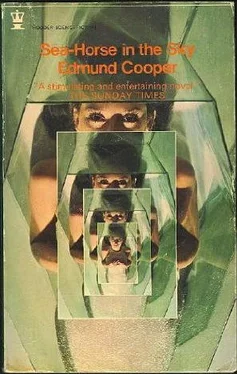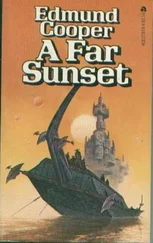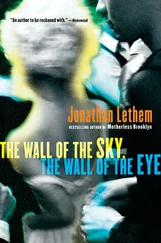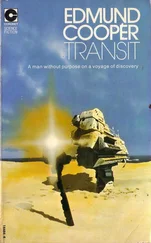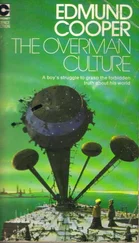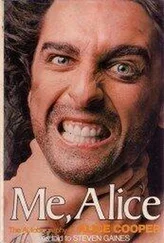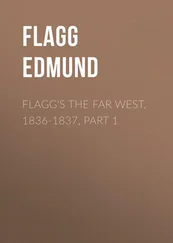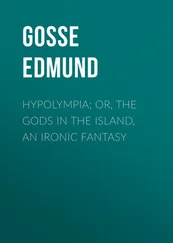“My trouble,” said Russell, “is that, like the Elephant’s Child, I have an insatiable curiosity.”
DURING THE NEXT few weeks, several interesting—and some frightening—things happened. Ever since he had suggested the aim of ultimately passing through the mist barrier to explore the world outside, Russell noticed that the morale of his thirteen companions had improved perceptibly. Up till that time, they had felt helpless in a situation that they could neither understand nor do anything about. But now they had a purpose—a real, if limited, objective. It was enough to dispel the insidious mental lassitude that had imperceptibly sapped their energies and their will power.
One of the small but ultimately important things that happened was that one of the British students, Janice Blake, managed to rear some chickens. She had been brought up on a small East Anglian poultry farm, and she was very home-sick. It occurred to her one day that some of the eggs that were nocturnally delivered to the supermarket by the indefatigable metal spiders might possibly be fertile. So she made a straw box and rigged a low power electric light bulb, wrapped in some discarded clothing, to provide the heat normally supplied by a broody hen. She kept the box of straw and the simple heating appliance in one of the spare rooms of the Erewhon Hilton. Each morning, she added two eggs to the clutch, each pair of eggs taken from a different batch at the supermarket. On the twenty-third day of her experiment, she was rewarded by a chicken hatching. Another came out on the thirty-fourth day, and two more on the fortieth day. One of the chickens later revealed itself as a cock, and in the end, Janice’s experiment yielded some very useful and rewarding results.
Meanwhile, Robert Hyman had appointed himself official weapon maker. He had already equipped the men with long bows; but archery was clearly not a common talent. Apart from Robert himself, no one could use the long bow with any degree of accuracy. So he designed a simple crossbow or arbalest that used a short but heavy bolt. He made the crossbow so that it could be used also with some effect by the women, and when he had found the best balance between power and ease of use, he put the crossbow into mass production. He spent most of his days in one of the small workshops beside the hotel, turning out a dozen crossbows and a large number of bolts. In the evenings, just before dinner, the group would indulge in target practice under his instruction. After a time, even the women were able to hit a target the size of a man at thirty paces.
When he had satisfied himself that the crossbows and bolts could be used effectively by everybody, Robert began work on a more ambitious project. He began to design a large but portable ballista. He had talked the matter over with Russell. Crossbows, hatchets and knives were fine as weapons for personal combat or protection; but an occasion might arise—if, for example, there were some serious difference of opinion with the occupants of Keep Marur—where a long-range engine of destruction was required. The ballista that Robert was proposing to build could be handled and transported by three men, and should be able to hurl a ten pound missile about half a kilometre. In short, it could be used against a large target that was well out of bowshot range.
Recalling his visit to Keep Marur, Russell was confident that the Gren Li people only had light personal weapons. Regarding the ballista as a form of insurance, he was therefore much in favour of a weapon that could give some strategic advantage. Although he hoped that the friendship and the bond that existed between himself and Absu mes Marur would prevent any serious clash, he was not so naive as to rely on it entirely. Besides, something might happen to Absu; and his successor might not feel bound to honour the friendship. The Gren Li people were environmentally conditioned to be fierce and warlike. If it came to a clash involving close range weapons, they would very soon make short work of the terrestrials.
So the ballista began to take shape.
While this project was under way, John Howard made an important discovery. He found, quite by accident, a large patch of ground that was naturally rich in saltpetre. By the slow and arduous process of getting it out of the soil and into a solution and then crystallizing it out of the solution he managed, during the course of several days of digging and separating, to produce about five kilogrammes of fairly pure saltpetre.
Access to sulphur was easy. It was in the supermarket for medicinal purposes. All he now needed was charcoal, and that could be obtained by heating wood in an enclosed container.
His first gunpowder mixture was too coarse, and only fizzled. But when Mary had ground the charcoal and the sulphur to a very fine powder—oddly, this was the hardest part of the entire business—John produced a gunpowder that was very potent indeed. With such gunpowder, it would be possible to make simple grenades. And grenades, like the ballista, were another piece of insurance.
Warlike activities did not, however, predominate. Cautious and systematic exploration was undertaken, particularly towards the south and the territory of the People of the River. Russell did not think that the time was yet ripe for a confrontation with such primitive people. He thought it probable that they would fight first and ask questions afterwards, as it were. So he wanted to be sure that the terrestrials could deal with any aggression before he risked holding out the hand of friendship.
But this did not preclude observation. And although the People of the River would undoubtedly be stronger on forest lore—therefore dangerous in wooded country—if the terrestrial observers kept as much as possible to open ground and made good use of their binoculars, the risk of a surprise encounter should not be too high. Paul and Marion Redman, Andrew Payne and Selene Bergere trained together and formed themselves into a semi-permanent exploration force. Both Paul and Andrew became reasonably good shots with the crossbow; and Selene, who was not very good with mechanical or even semi-mechanical things, devised her own weapon. It was a derivation of the South American bolas— two large stones joined together by a metre of cord. Selene learned to swing and fling with surprising accuracy, so that she could bring a running man down at distances of up to forty metres.
So, with crossbows, bolas and hatchets for protection against man or beast, the exploration force made three successful trips to study the People of the River. As on the first occasion when the People of the River were seen, they maintained a respectable distance and did most of their spying with the binoculars. They counted—or thought they counted—a total of ten adults and four largish children.
The People of the River were shaggy in every way, and it was virtually impossible to distinguish males from females. During the daytime they seemed to stay pretty close to their bridge of huts, busying themselves with simple tasks, relaxing and sleeping, and even occasionally indulging in what looked like simple games. They were obviously hunters—and, most probably, nocturnal hunters. No doubt they also ate any wild fruit or plants that were palatable; but fresh meat was clearly their main diet.
On their second expedition, the terrestrials saw for themselves the kind of animals that were trapped by the People of the River. While they were observing the bridge of huts from a vantage point fairly near to the river itself, they heard a great commotion in a large patch of trees that straggled out from the main part of the forest behind them. Paul and Andrew decided to investigate. They found a creature that looked rather like a particularly vicious wild boar. It had evidently just sprung a trap, and was now suspended untidily in a large tough net that hung between two young trees. The boar—if such it was—had a mate, who was growling and leaping up and down helplessly. When the mate saw the two terrestrials, it charged instantly and was only brought down by a very lucky shot from Paul’s crossbow. The bolt had completely disappeared inside the animal’s chest, but it still refused to die, and the two men had to finish it off with hatchets.
Читать дальше
